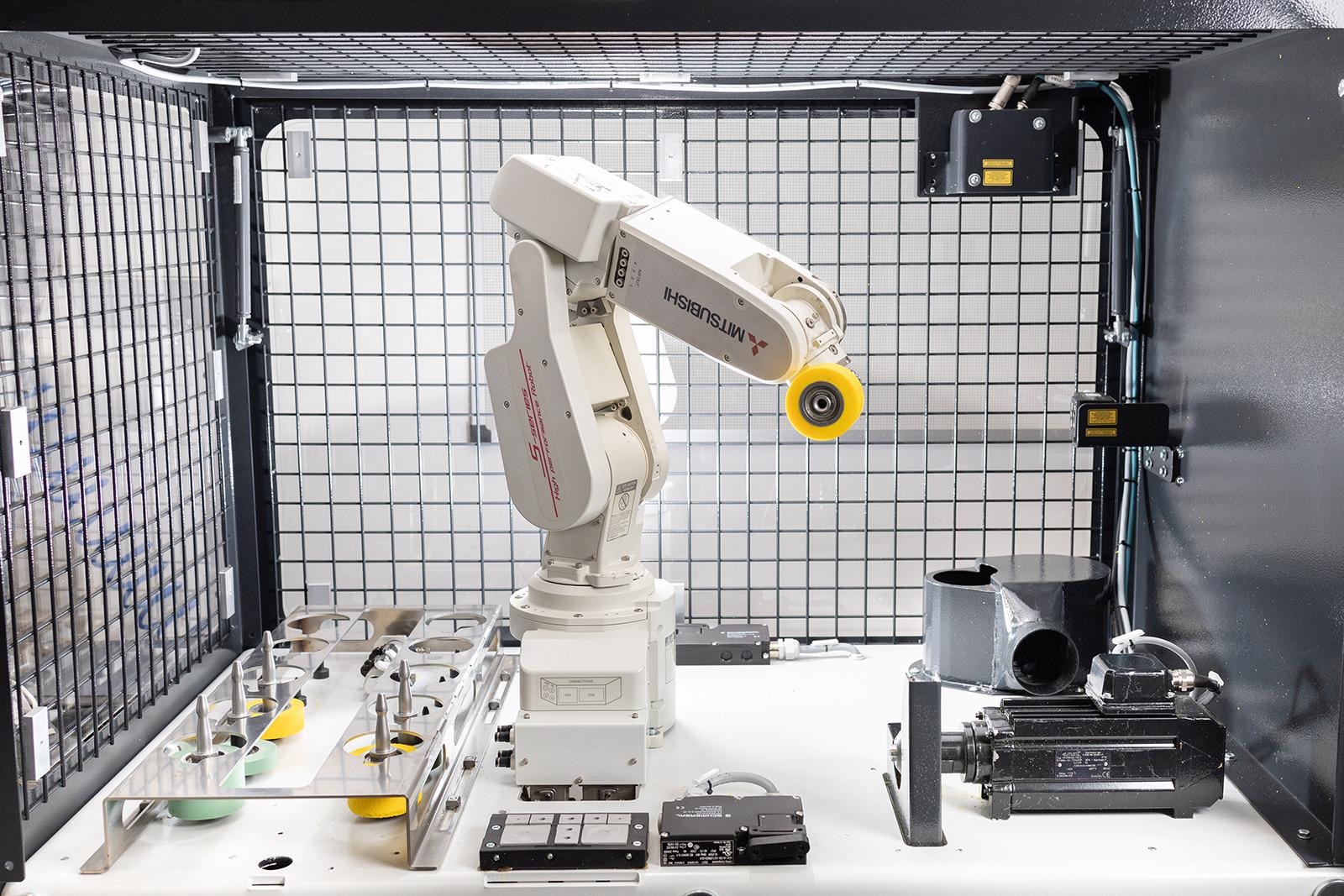Reviewed by Alex SmithMay 4 2022
Entrepreneurs have yet to place much faith in artificial intelligence; numerous methods are still carried out manually. RoboGrinder, the grinding machine invented by the Fraunhofer Institute for Mechatronic Systems Design IEM, is an illustration of how artificial intelligence and control technology may be integrated to create a completely new trustworthy system.
 The grinding machine RoboGrinder saves up to 40 percent of the grinding processes. Image Credit: © Fraunhofer Institute for Mechatronic Systems Design IEM.
The grinding machine RoboGrinder saves up to 40 percent of the grinding processes. Image Credit: © Fraunhofer Institute for Mechatronic Systems Design IEM.
It removes up to 40% of the grinding processes. From May 30th to June 2nd, it will be on display at the joint Fraunhofer booth at Hannover Messe 2022 (Hall 5, Booth A06).
Companies frequently struggle with artificial intelligence: they are anxious that they will end up with a solution that is not always trustworthy — and as a result, they frequently continue to do jobs manually, particularly those of a complicated nature. Scientists at Fraunhofer IEM have set themselves the task of overcoming this skepticism and restoring faith in artificial intelligence.
We combine the tried and true—control technology—with the new—artificial intelligence. While much of control technology is based on physical and mathematical models that can be analyzed and trusted, artificial—which in itself is not particularly trustworthy at first—usually relies exclusively on data and also solves creative tasks.
Steven Koppert, Group Manager, Trusted Machine Intelligence, Fraunhofer Institute for Mechatronic Systems Design IEM
“Combine these two approaches and you get a flexible, trustworthy system—also known as trusted machine intelligence,” Koppert added.
Robogrinder: An Intelligent Grinding Machine
The best way to explain what that signifies is to use an example: The RoboGrinder.
For the very first time, the grinding process for the rubber-like rollers that press films against the component while attaching them to window frames or baseboards is being computerized at Düspohl, a mechanical engineering firm.
These rollers, called profile wrapping rollers and tend to have a complex structure, had been ground by hand until now. This is due to the rubber-like material’s inability to be automated using only control technologies.
This ultimately grinds away all extra content depending on a target/actual comparison. The issue: Since the roller material is so flexible, it bounces back after grinding, which is extremely hard to model and include in a control technology approach.
This necessitates several grinding cycles, but the closer the objective gets, the less efficient the process becomes. In addition, as the number of grinding processes increases, the surface quality can decrease.
We document any grinding errors that occur during each grinding process and use it to train an artificial intelligence model—so the AI takes over the correction, especially during fine adjustments. Comparatively, you could say that control technology serves as a crash barrier, while artificial intelligence ensures that the curve of the road is negotiated in the best possible way.
Steven Koppert, Group Manager, Trusted Machine Intelligence, Fraunhofer Institute for Mechatronic Systems Design IEM
For the first time, the process can be effectively mechanized in this manner. This means that profile-sheathing firms in the building component and furniture industries can quickly generate spare parts at their facility. This requires very little space and the prototype is only one by two meters in size.
Using our machines, our customers from the building components and furniture industry produce a wide range of different models and components. At the same time, they must be able to react quickly and easily to the circumstances of new orders. The intelligent grinding system would therefore be a major building block for automation.
Uwe Wagner, Managing Director, Düspohl
Reducing Grinding Processes by up to 40%
Fraunhofer IEM researchers initially digitally mapped out the grinding process. As a result, when regrinding from the approximate to the defined size, RoboGrinder can save 15% of grinding processes.
When regrinding worn rollers, the advantage becomes further evident because the grinding process is done directly on the sensitive area — which means regrinding must be done with particular caution to avoid removing too much material.
“Using the digital twin, we were able to show that we can eliminate up to 40 percent of the grinding process,” says Koppert.
RoboGrinder also has the following features: the stated size is assured, a laser scanner independently identifies the work piece’s shape, and the machining procedure is set autonomously. The setup time is also distinctive: from conception to execution, it only takes a few minutes.
Researchers are currently performing parameter studies and working on a variety of challenges, including building. From May 30th to June 2nd, 2022, the prototypes of RoboGrinder will be on display at the Hannover Messe (Hall 5, Booth A06).
This should be of importance to any company that wants to automate manual procedures reliably and cannot do with ordinary automation technology. After all, the process of developing reliable artificial intelligence is broadly applicable.